#reywancha
Explore tagged Tumblr posts
Text
Nayshall's clothing (pt. 1)
I'm gonna be 100% honest with ya'll. I was writing a Bosch smut and for the life of me, I didn't know the names of the clothes he was wearing. But I didn't want to put "Robes" and move on, so I did a deep dive into Nayshall's clothes.
Nayshall is a blend of multiple cultures in one, but the general consensus of forums on Reddit and other forums was that Nayshall was inspired by Bhutan, Nepal, Indian, and Tibet cultures.
This is going to be split into multiple of parts because Nayshall has a lot of different types of clothes so I won't be able to cover it in one sitting. I barely even scratched the surface here.
If anyone is more knowledgeable than me and sees that I got something wrong please tell me in the comments. But I'm posting this because I want people to see the hard work the street-fighting devs put into this and the world of Nayshall.
Chuba


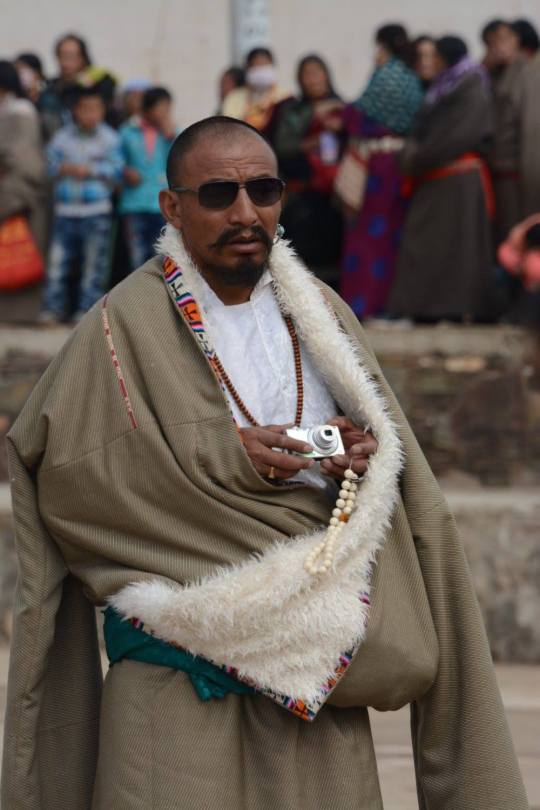
The chuba is a floor-length, left-crossing loose garment that is adjusted at the waist with a wide, usually red cloth belt, and pulled up to different degrees according to sex, rank or region. It is an extraordinarily adaptable garment worn by town dwellers, farmers, nomads, men and women alike, and is equally wearable on horse or motorcycle.
Chubas are pocket-less and held together with a waistband, with room in the front that serves as an “inside pocket” or inner pouch to store necessities such as food items, money belts, amulets, personal things, and even an infant in the bosom.
The chuba can be worn in different lengths, and the shorter the chuba, the more voluminous the pouch resulting from the overhanging material used to hold small items. Women wear their chuba ankle length, while men mostly pull them up the mid-calf or above the knee. Tibetan weather is fickle and temperatures can rise and fall within minutes.
Half-chupas: Just the skirt
Full chupas: Can be worn with a shirt
One-piece chupas: A one-piece dress
Town women: Wear their chubas floor length with pumps or high heel boots
Farmers and nomads: Double them over trousers
Ex: Rewancha, Yua, and Bosch all wore a form of chuba as their gown. The Chuba had 2 sleeves, but the locals usually only wear one sleeve and leave the other hanging loose. This is a way of adjusting the body temperature. When it gets hot, they take off one sleeve to cool down a bit. But if the temperature keeps rising they remove another sleeve too. We can actually see in Bosch's picture that the other sleeve is tucked in the back.
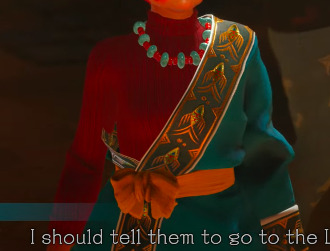


They often have soft fur, pulu, or colorful cloth on the collar, front, cuff, and lower hem of the gown.
5 types of robes could be made out of, Pulu woven fabrics, lambskin robes, sheepskin robes, woolen robes, and light robes.
Woolen robes are made with inner layers of sheep fur, so they are light and warm, making them popular in warmer, agricultural areas like Nayshall.
Pulu, the traditional Tibetan wool fabric, is made by fluffing and combing the wool into a thread by fingers, then weaving it with a wooden shuttle loom. Pulu robes are a favorite in pastoral areas as well as farmland.
Lambskin is ranked by degree, according to the length of lamb hair, curliness, and quality of the skin. 40+ lambskin is necessary to make a medium-class lambskin robe.
Shirts


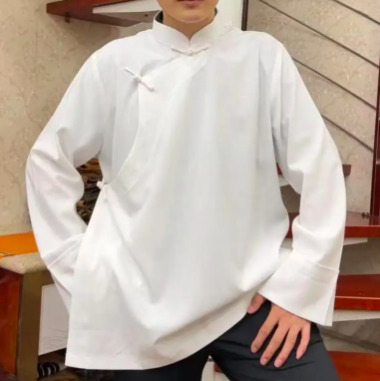
pants

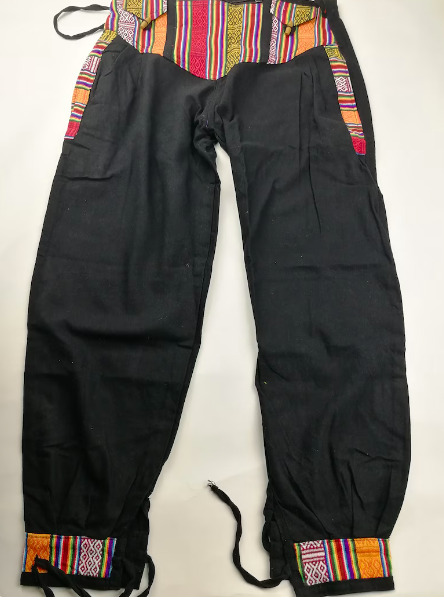

Modern and traditional
A growing trend among young Tibetans is blending traditional and modern casual clothing. Young Tibetans often try to find a balance between modern styles and their cultural heritage. It is not uncommon to see some Western-style clothing like jeans and t-shirts
The classic chuba robe is still everywhere, but Tibetan youth will make stylish adaptations. The cut of the fabric or the embroidered designs will be changed to something more contemporary. These changes show the desire to keep old traditions alive while making innovations to express personal style.
Ex. Same with the people in Nayshall they blend traditional and modern together. Shopkeeper Tsanpa wears jeans with his gho (Bhutan) tucked in. Yua wears modern shoes that resemble Tibetan boots, and Kina wears a beanie on top of her head.



note that Kina may also be wearing a Kora Yushu hat.
The Kora Yushu hat is made from a blend of yak and merino wool, and its fabric originates from Tibet and China. Kora sources the wool directly from Tibetan communities to ensure its quality and origin. The hat is lightweight, warm, and thin enough to fit beneath a hood or helmet, making it suitable for winter and mountain use.

Hairbeads
Tibetan hair jewelry, including braids and hair beads, is used to mark life milestones like birth, marriage, adulthood, and death. The jewelry often reflects the colors of nature.
Tibetan hair beads can be used by both men and women. In Tibet, long hair was recommended for both men and women, except for monks and nuns. Tibetan braids can signal a woman's marital status, social rank, and tribal affiliation. Tibetan men wear hair beads but there is no male equivalent.

Headdress
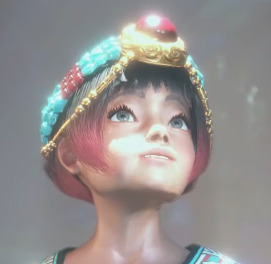

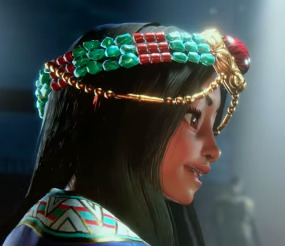
Tibetan headdresses vary by region, age, and marital status. For example, unmarried girls wear a single braid with a red hair string, called Xia Jiu in Tibetan.
Tibetan women wear headdresses on special occasions, such as festivals and their comings-of-age. Headdresses can be colorful and made of coral, turquoise, or other materials. For example, a "Bazhu" is a deluxe headdress made of coral or turquoise with gold or silver earrings. Tibetan women also wear silver bracelets on their left hand and white conch bracelets on their right.


Jewelry


Tibetans traditionally wear jewelry, which is often made from gold, silver, and precious stones. The most common gems used are turquoise, coral, and pearls, which are used in necklaces, earrings, hair ornaments, and to decorate ritual objects. Tibetan jewelry can also be made from cow bone, amber, shell, and agate.
Tibetans wear a variety of jewelry, including ornaments made of gold and silver, as well as jewelry made of amber, agate, jadeite, pearl, and ivory. Tibetan jewelry traditionally features materials from across South Asia, East Asia, and the Middle East, and the symbols on Tibetan jewelry are usually from Himalayan Buddhism. Tibetans like to wear many ornaments and jewelry, such as Buddha beads, hair bands, hair accessories, belts, prayer beads, and necklaces.
Jewelry is a symbol of status and wealth in Tibetan culture, and each design has a specific meaning. For example, ornaments with symbols of animals, flowers, and stones are often given to commemorate special occasions. Some also believe that wearing gold enhances spiritual power over evil spirits. Offering jewelry to holy statues is thought to generate positive virtue for the donor.
This article also goes into the types of ornaments they use in their jewelry
Jewelry can also serve as a talisman, with different amulets protecting against disease and harm. For example, coral and turquoise are said to ward off evil spirits and illness.
Many Tibetan jewelry pieces are passed down from generation to generation. For example, some Tibetan-style pendants are used in Buddhism as ritual instruments to subdue demons, which are believed to dispel sins and bring people power, intelligence, and courage. Many of these pendants also have Sanskrit inscriptions of a religious symbolic nature.
Braids
Braids are also a symbol of strength, wisdom, and identity for some indigenous men and boys. They can also represent a connection to the earth, ancestors, and the creator. For example, in Native American tradition, hair is a signifier of spiritual practice, and braiding demonstrates strength in unity
boots
sumba shoes

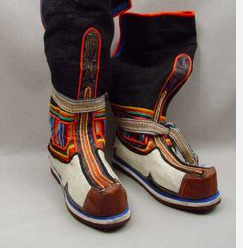

Tibetans typically wear boots, which are more cultural representations than practical clothing. However, due to the prevalence of mass-produced shoes, traditional Tibetan boots are no longer the daily footwear for ordinary Tibetans. Instead, they are now usually part of ceremonial attire.
Tibetan boots are a significant part of the Tibetan way of life. They are more cultural than practical, and are worn to represent different regions and environments. For example, boots with a pointed toe are suitable for different types of terrain, and can be worn with a garter in cold weather. Boots from different regions of Tibet have different styles and qualities. For example, boots from Chamdo and northern Tibet are simple, while boots from Shannan and Xigaze are more delicate.
Tibetan boots are commonly made from cowhide, pigskin, corduroy, and pulu, a traditional woolen fabric. Other materials used include cloth, canvas, velvet, leather, and felt. The original boots were made from yak hide, and the soles were embroidered with patterns like dragons and snakes, and the shoes were decorated with red and green woolen cloth.
Tibetan boots come in two general types: short leg and long leg. Most Tibetan boots are lined or padded, though some may be unlined. The heads of corduroy boots are made of cowhide, and many kinds of pulu boots have cowhide soles.

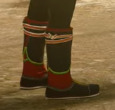
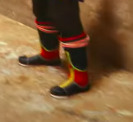
17 notes
·
View notes
Text
Where does Bosch live?
You know, I wanted to write some small headcannons about meeting Bosch when you and him are younger. But I’m having a hard time deciding where he actually lives. Old Nayshall or Lowlands.
For some reason, I thought that Bosch lived in Lowlands because that’s the main area where we would’ve gotten any information about the Resistance.
But when doing a deep dive into Nayshalli clothing, the people in the Lowlands wear slightly different clothing than Bosch and Yua. I’ve mentioned before that Nayshall was a blend of multiple cultures, so in Old Nayshall you would see people wearing Chubas, Ghos, Saris, and Kiras.
Then I read Street Writer’s article on Nayshall and they mentioned “In Old Nayshall the majority of residents still wore traditional Tibetan fashion. In the Lowlands, they wore more Western attire. Mostly tank tops, and pants.” So I had to see for myself.
When you go into the Lowlands, they are wearing Western attire. Their clothes are simpler and more modern than traditional. But they do have traditional clothing that’s mixed with mostly modern ones. The most prominent traditional clothing are Ghos and Kiras, which are from Bhutan.
Lowland's clothing is different from the ones in Old Nayshall:
Lowlands
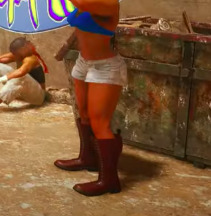
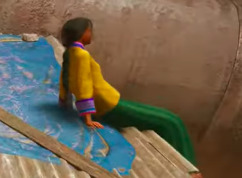
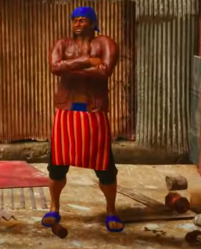

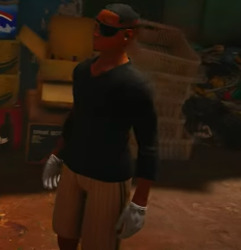
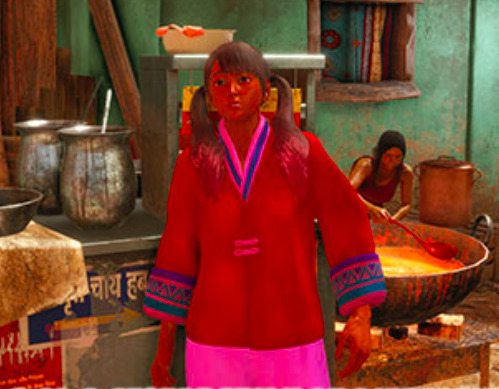
Old Nayshall
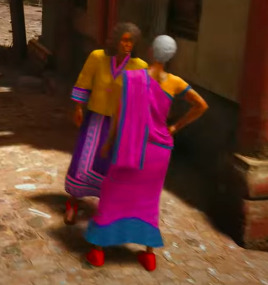
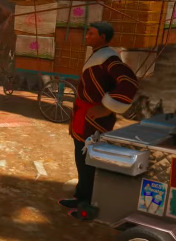
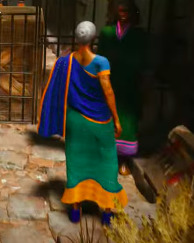



They do have Tibetan elements in the Lowlands but not much, it’s mostly seen in their boots. In total, I think I only saw 2 people wearing Chubas when exploring it. Not to say they don’t, but it’s more common to see people wearing chubas in Old Nayshall than Lowlands.
Not a major detail but every time we interact with Yua she’s always in Old Nayshall. And usually, when people grow up in a certain area, they tend to reside there.
So I'm leaning more towards Old Nayshall for where Bosch and Yua live. Does anyone agree with this or do you think they live in the Lowlands?
7 notes
·
View notes